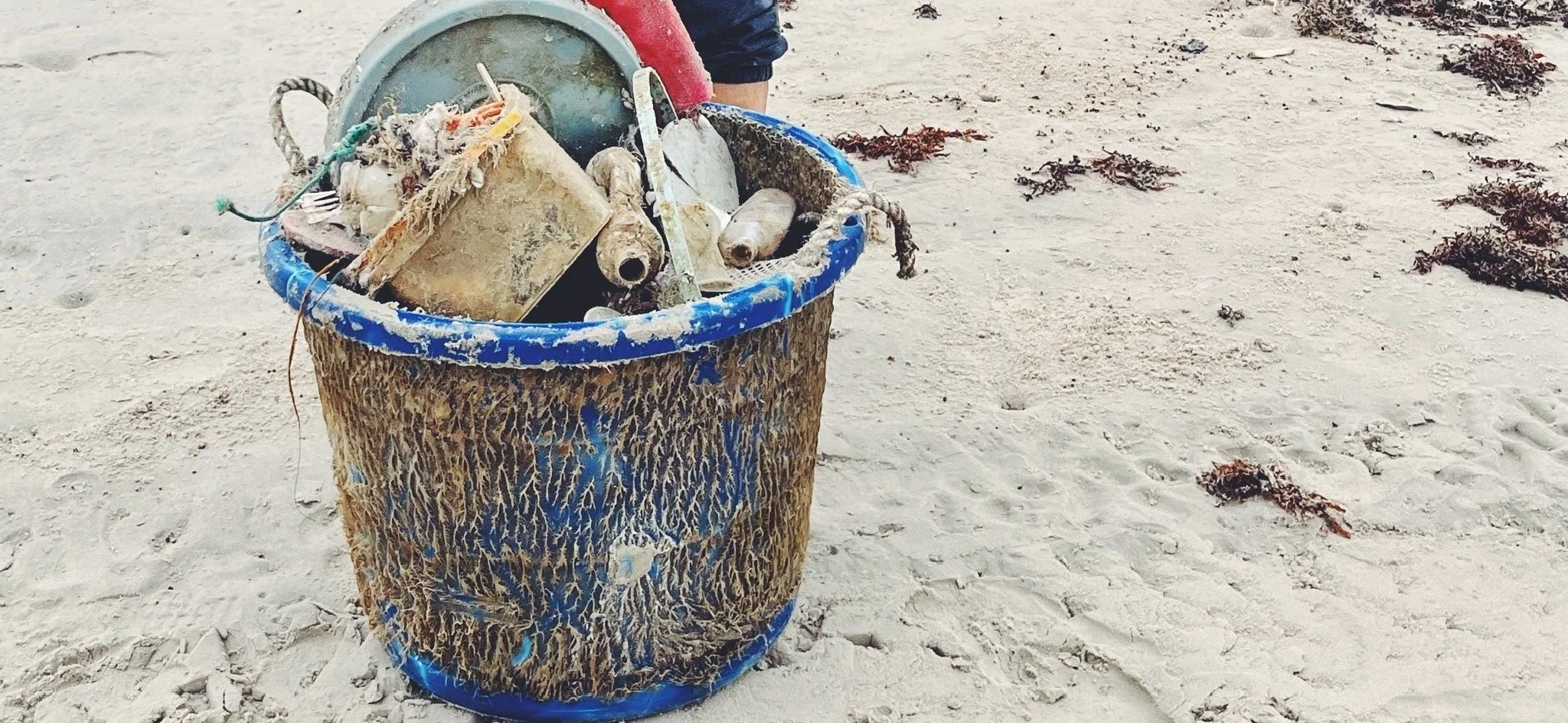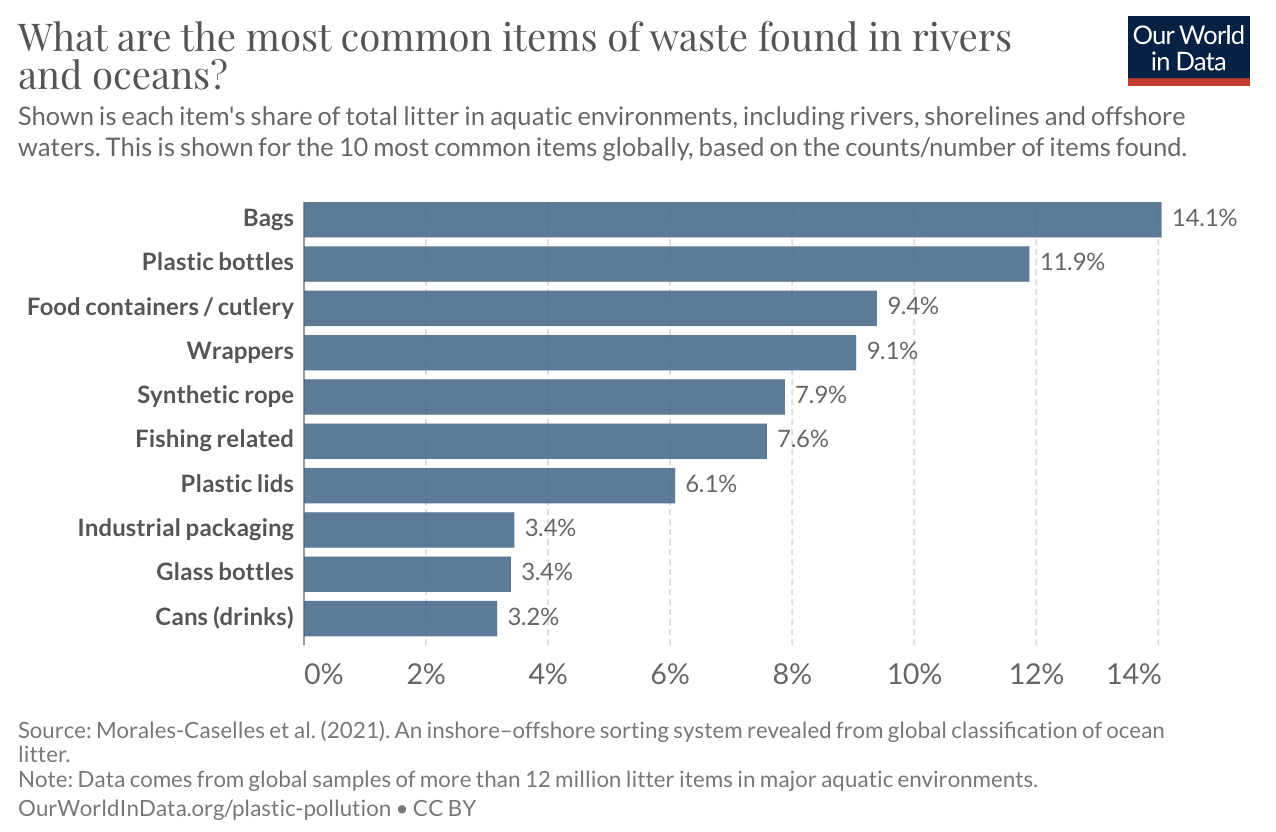Focusing on the trash that comes with food
You might be surprised to hear that some disposable food packaging is better for the environment than unpackaged food. Not all food trash is equal. Here’s where you can focus for the greatest environmental impact.
I recently went down a bit of a rabbit hole reading articles by Dr. Hannah Ritchie, the lead data scientist at Our World in Data. Her articles focus on the impacts of the world’s food systems on the environment. And some of her conclusions may surprise you.
For example, though we often hear the advice to “eat local,” research shows that, on average, what you eat is more important than how far it travels. Why? Because some types of farming cause more greenhouse emissions than transporting the food.
Another surprise? Some food trash, especially in the form of packaging, prolongs shelf life and prevents food waste while providing food for more people. It means we can transport farmed foods, reducing the total number of environmentally intensive farms.
Of course, not all food trash is equal. And research also shows that some types of food trash do cause more problems than solutions.
Here are three types of food trash to eliminate for more impact.
The trash that leads to deforestation
According to Dr. Ritchie, “Since the turn of the millennium, the world has been losing around 5 million hectares of forest every year. Nearly all of this occurs in the tropics; almost half of all deforestation takes place in Brazil and Indonesia.” (Source)
And what causes this massive loss?
“Beef production is responsible for 41% of deforestation; palm oil and soybeans account for another 18%; and logging for paper and wood across the tropics, another 13%. These industries are also dominant in a few key countries.”
Since this blog is focused on the trash that comes with food, I’ll focus here on the implications for food packaging and the disposable items we use to prepare our food and beverages. And I’m specifically looking at paper.
From paper plates and cooking supplies to paper coffee filters (CoffeeSock’s personal villain) and cups—where possible, we can avoid them. Where they already exist, we can recycle them.
The trash that ends up in rivers and oceans
Seven of the ten most common items found in the world’s rivers and oceans come from food waste. And I’m not including the 7.6 percent of trash that comes from fishing.
Rope, fishing gear and industrial packaging make up 18.9 percent of trash in the water, compared to 43.1 percent that comes from plastic bottles, food containers, plastic cutlery, lids, glass bottles and cans. Then there’s bags—making up a whopping 14.1 percent of trash in the water.
What can we do with this information? As Dr. Ritchie points out, some of this food packaging has less impact when it comes to preserving shelf life and keeping the whole food items out of the trash.
For you and me? It means focusing on eliminating the trash that doesn’t promote shelf life—that includes all plastic utensils, plastic cups with their lids, and plastic bottles where possible.
The trash from beverages other than water
In the case of both deforestation and trash in the water, we see that the paper and plastic we use for beverages comes up again and again in the forms of bottles, cans, and cups.
Also telling is the information that certain beverages: cow’s milk and (eeek) coffee, can be environmentally intensive to grow and distribute.
I was surprised to learn that coffee is unique in that the packaging used in the industry accounts for a larger portion of its overall emissions than for almost any other food or beverage. (Check out the chart on this page.) While the packaging is less of an issue than the farming itself, it’s still significant.
If you’re a big coffee fan (that’s why you’re here, right?), then it’s worth it to look into the packaging associated with your favorite brand.
In terms of milk, the article points out that dairy milk “has significantly higher emissions than plant-based milk.” We also see that nuts are at the bottom of the emissions list, in part because growing many nuts means growing trees.
That’s nut milk 2, cow’s milk 1. And to rack the points up higher, you can make your own nut milk to completely eliminate the plastic or glass containers that you purchase the milk in.
A short action plan for less food trash
OK. I just hit you with a lot of data. What should you actually do? Of course, that will depend on your personal preferences and lifestyle.
Because we believe in simple and economical solutions, here’s what we suggest:
Ditch paper coffee and tea filters (of course!)
Carry reusable food and beverage containers and cutlery with you when you can

